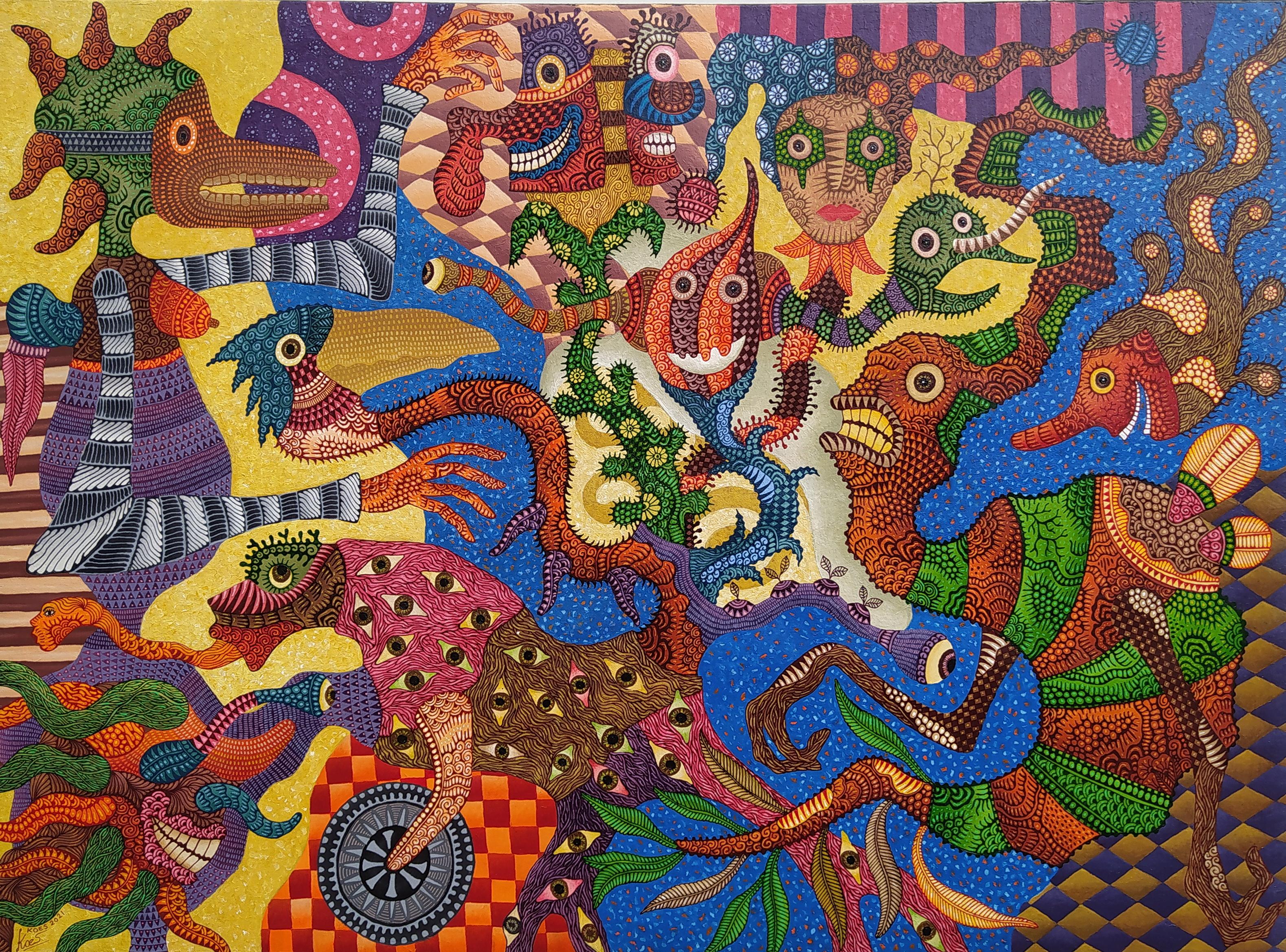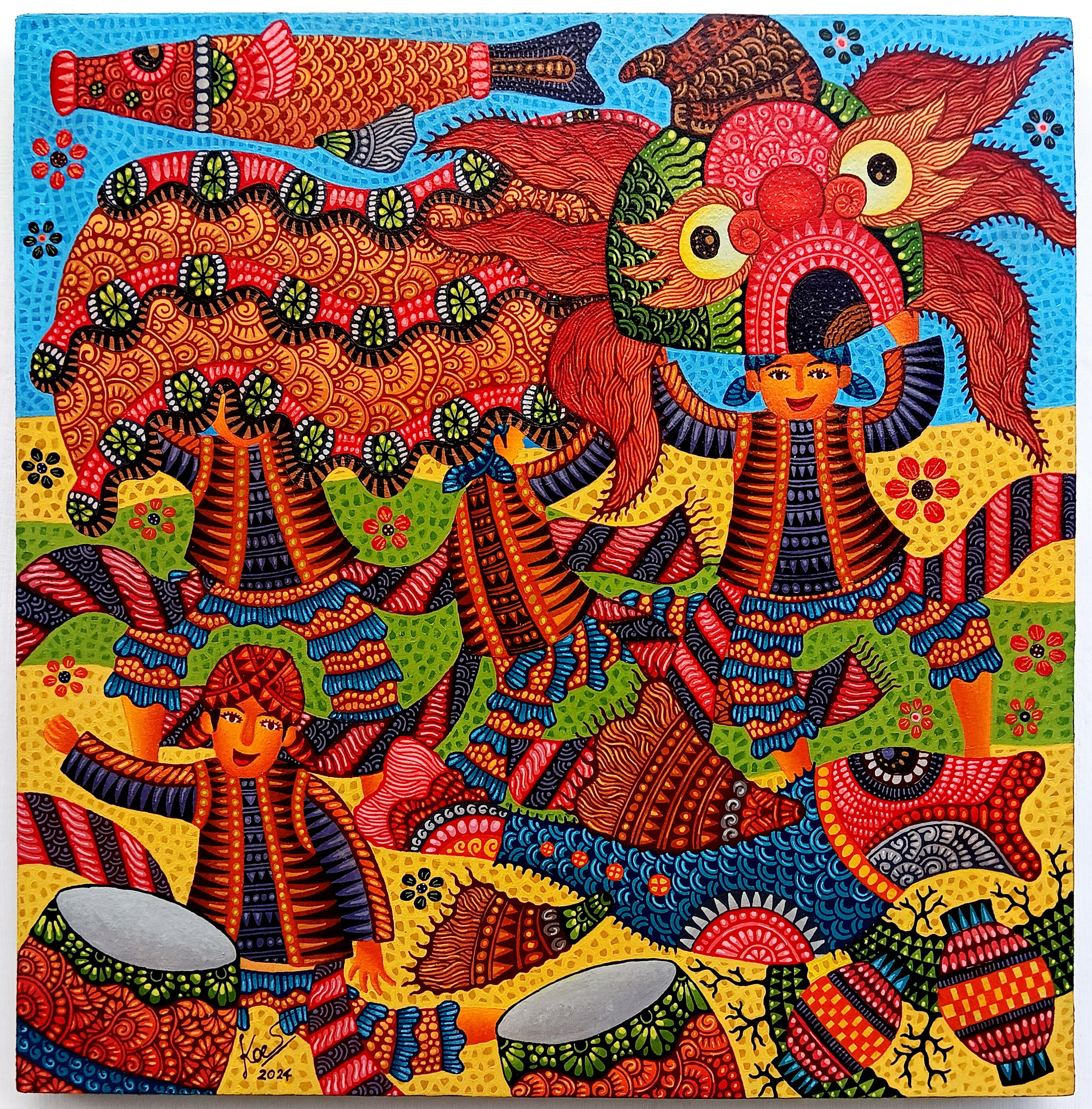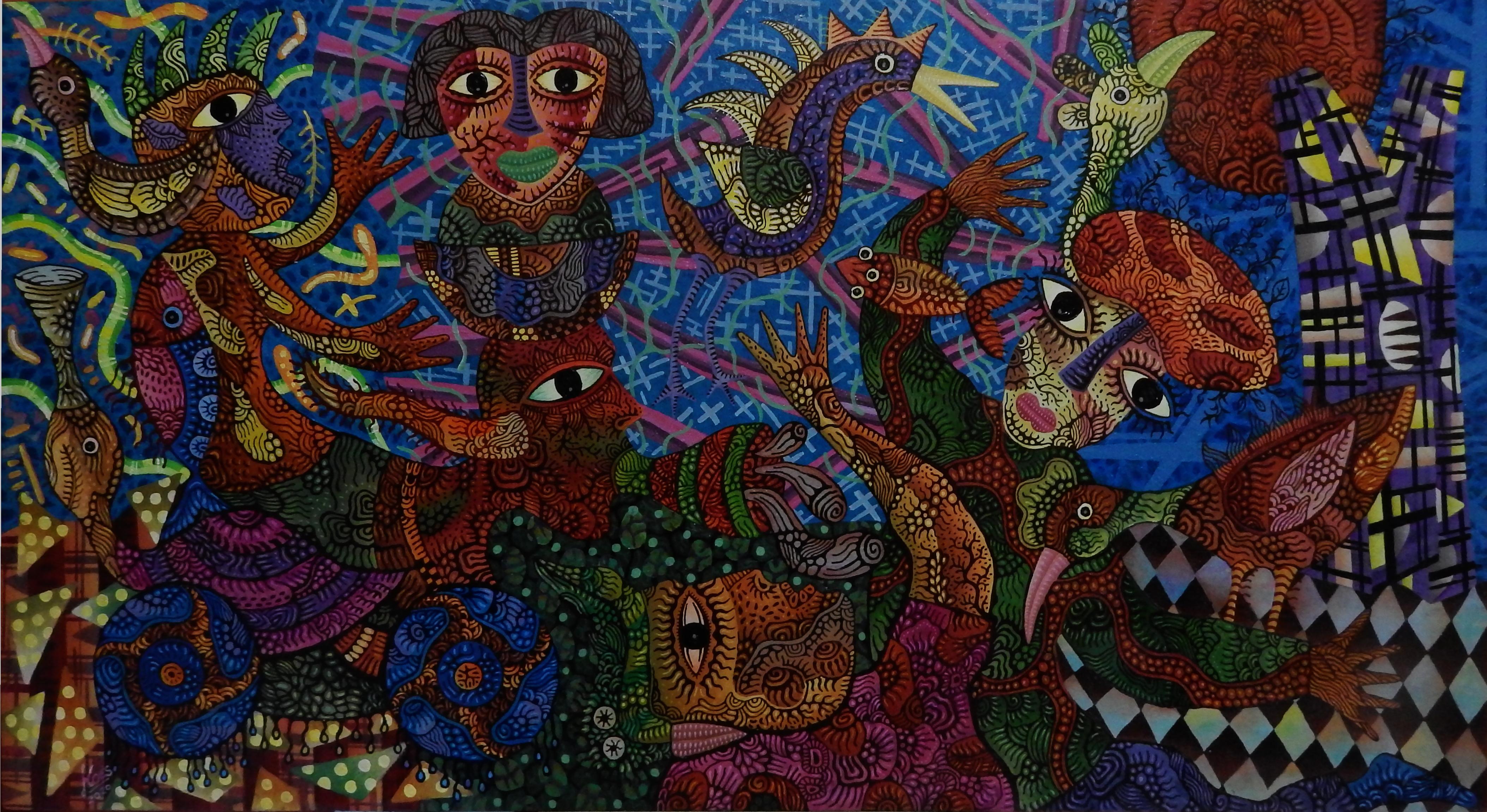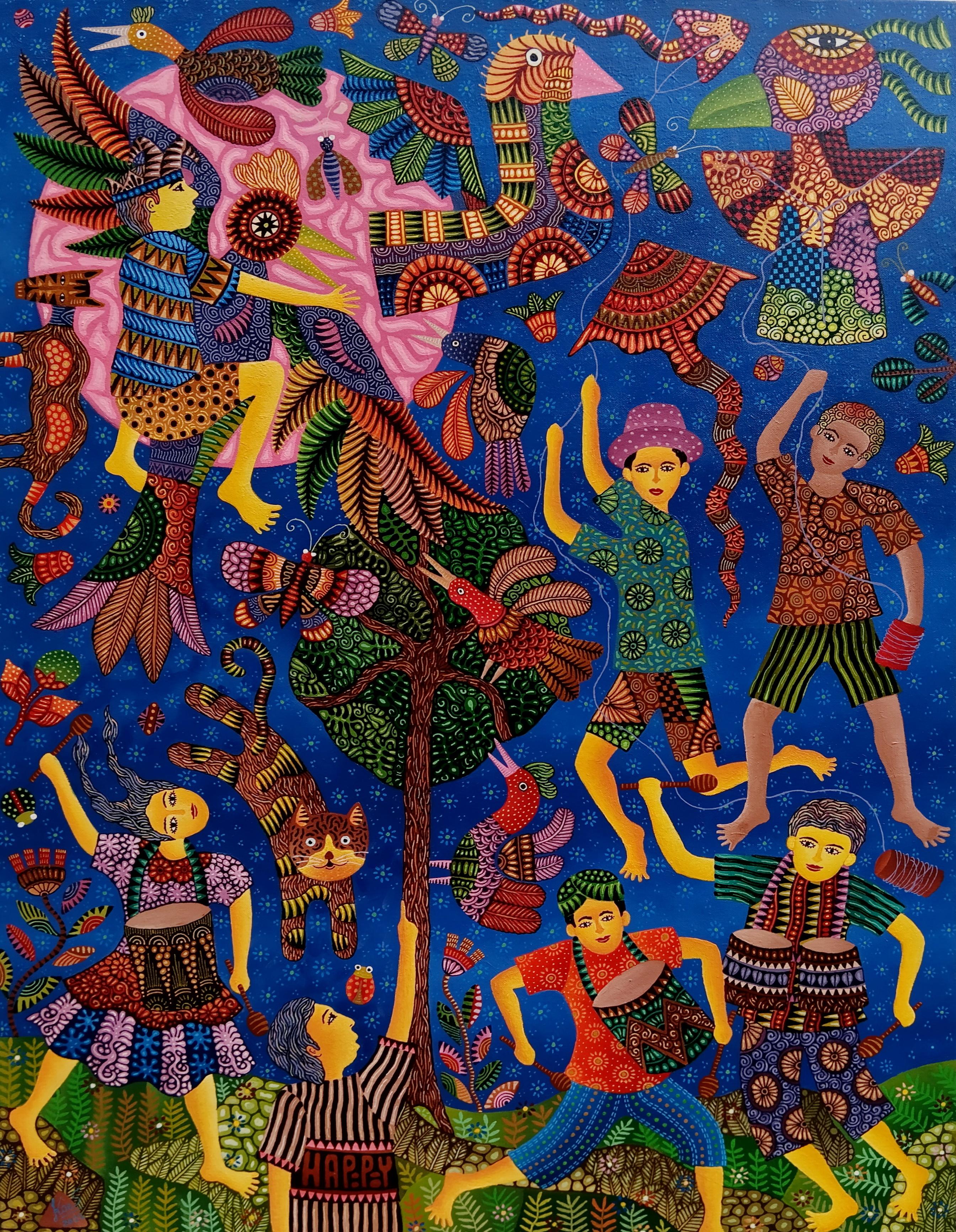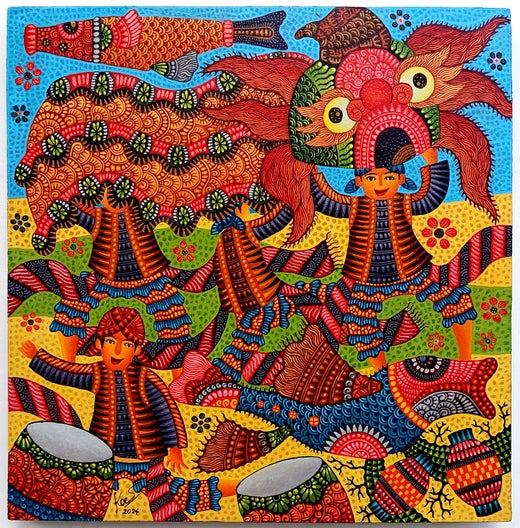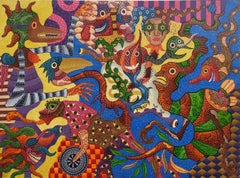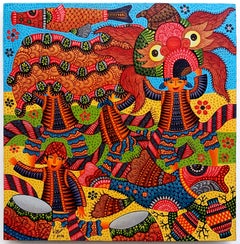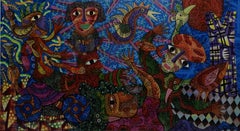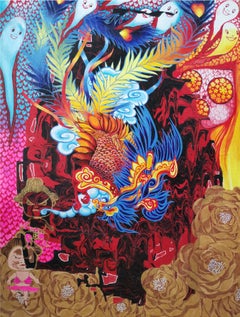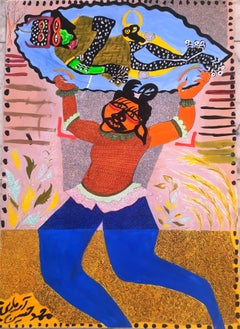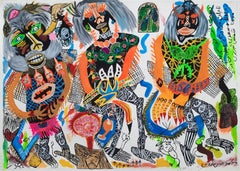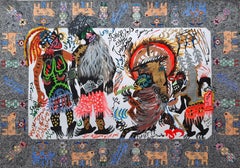Acrylic on canvas
The Origins of Wayang Kulit Performances
Wayang Kulit is one of Indonesia's traditional art forms that has developed over centuries, particularly on the islands of Java and Bali. This art combines elements of drama, vocal art, music, visual art, and literature into a unique performance rich with philosophical meaning.
Origins and History
Influence of Local and Indian Culture
Wayang Kulit is believed to have originated from local Nusantara (Indonesian archipelago) culture, later influenced by Indian culture, especially during the introduction of Hinduism and Buddhism to Indonesia around the 1st century AD. Stories in wayang such as the Ramayana and Mahabharata are literary legacies from India that were then adapted with local nuances.
The Hindu-Buddhist Kingdom Era
Wayang performances flourished during the time of major kingdoms such as the Medang Kamulan, Ancient Mataram, and Majapahit kingdoms. At that time, wayang served as a medium for religious preaching, education, and entertainment for both the common people and the nobility.
Transformation During the Islamic Period
When Islam spread to Java, wayang art did not disappear. In fact, the Wali Songo (nine Islamic saints), especially Sunan Kalijaga, used wayang as a tool for preaching. The form of wayang kulit was modified so it wouldn't resemble human figures (in accordance with Islamic prohibitions), and Islamic values were incorporated without eliminating the local cultural roots.
Function and Meaning
Wayang Kulit is more than just entertainment. It conveys moral messages, spiritual teachings, and depicts the conflict between good and evil. Characters like the Pandawa and Kurawa reflect the complex and dilemma-filled nature of human beings, yet always oriented toward goodness.
Wayang Kulit Performances
Performances are usually held at night and can last until dawn. In a single show, the dalang (puppet master) performs all the characters with remarkable skill and fluidity. The dalang also serves as narrator, voices the characters, and controls the storyline, accompanied by a gamelan orchestra and sindhen (female vocalists).
Characters:
• Jatayu: A wise and courageous old Garuda bird. Protector of truth and righteousness.
• Seranggi Dragon: An evil dragon ruling the haunted forest, spreading fear and terror.
• Rama and Laksmana: Crown princes of Ayodhya, warriors of righteousness.
• Ravana (in the shadows, as the mastermind of evil).
• Princess Shinta: Rama’s wife, symbol of purity and goodness.
Short Plot Summary:
Scene 1: The Haunted Forest of Seranggi
In the southern part of the Pancawati kingdom lies a cursed forest ruled by a terrifying creature called the Seranggi Dragon—a massive beast spreading poison and fear. The people dare not enter, for the dragon devours both humans and animals alike. Meanwhile, Jatayu, an old Garuda bird, feels called to protect the balance of nature. He resides atop Mount Mahendra, watching over the world below.
Scene 2: Shocking News
News of the Seranggi Dragon reaches Rama, who is living in exile with Shinta and Laksmana. However, as Rama is busy protecting Shinta from another looming threat (the shadow of Ravana), he sends Hanuman to investigate.
Hanuman reaches the forest but nearly falls victim to the dragon’s poison, only to be saved by Jatayu. Hanuman pays his respects and conveys Rama’s mission. Feeling it is time to once again uphold dharma, Jatayu agrees to face the dragon.
Scene 3: The Battle
Jatayu approaches the lair of the Seranggi Dragon. A tense dialogue follows: the dragon confesses he was sent by a dark force from Alengka (Ravana), with orders to destroy nature and spread terror to distract Rama.
Jatayu challenges the dragon, and a grand battle unfolds across sky and earth. The dragon breathes fire and poison; Jatayu strikes with his claws and radiant wings. Finally, Jatayu pierces the dragon’s eye with his talon and defeats him.
Scene 4: Ending and Moral Message
With the dragon slain, the forest flourishes once more, and the people can return to farming. Rama, Hanuman, and the people honor Jatayu, who returns to his perch on Mount Mahendra.
Semar and the Punakawan appear to deliver a message:
"Life is like a forest: when balance is broken, chaos reigns. But as long as there are pure souls who defend dharma, darkness will always have its limits."
Values of the Story:
• Courage and self-sacrifice for the greater good (Jatayu).
• The importance of protecting nature and maintaining balance.
• The triumph of dharma over adharma, as in the Ramayana epic.
• The honorable role of the elderly (Jatayu), equally vital as the young and strong.
